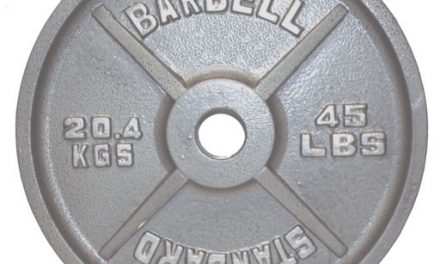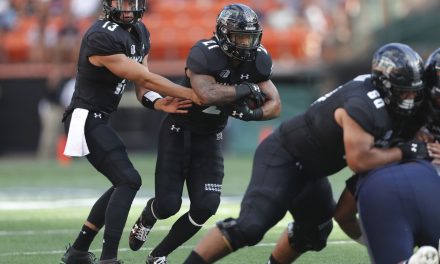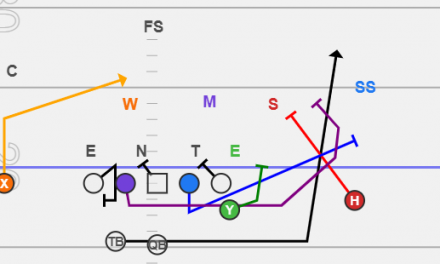When 10 and 11 personnel offenses came on the scene, defenses did not know how to respond.
They had large defensive lineman that could not withstand a fast pace offense.
They had bulky inside linebackers that were incapable of running to all 53 ⅓ x 100 yards of the field.
And nobody had four defensive backs that could cover. But unfortunately in 2021, teams have caught-up.
Defenses have moved their former defensive ends to the interior, their outside linebackers to defensive end, and their safeties to inside linebacker.
And due to these adjustments, they are now also athletic enough to bring people from everywhere (including safeties and corners), and are at times far superior athletically to what you can put on the field.
Add that to the fact that defensive coordinators are no less intelligent than they ever were, so every defense can still disguise their coverages and blitzes, wrong-arm and scrape, and know-how to read all offensive blocking schemes.
As fun as coaching offense has become, there are some days when it can be downright miserable!
Due to this unfortunate turn of events, there are not a lot of plays that spread offenses can use to take advantage of the opponent’s personnel like we were able to do even five years ago.
So what is the answer? Well, we do not have them all, but one of those answers is the Wham play.
WHAT IS WHAM, AND WHY WOULD YOU NEED IT?
In terms of WHAT, if you are new to this play, a Wham block is similar to a trap you already have in your offense that pulls guard and kicks out a defensive lineman.
But with Wham, this is done by using the tight end as the trapper.
In terms of WHY, it all has to do with the defenses ability to read blocking schemes.
Even with the ability to spread out the defense with multiple personnel packages and seeing teams scoring points at record-setting paces, not many blocking schemes have actually been created in the last few decades of football.
Like we discussed in our Buck Sweep article out of 11 personnel, offensive coaches have just slightly adjusted classic blocking schemes to fit their new personnel packages.
That being said, defensive coaches and their players are so in tune with how to stop the classic schemes like powers, traps, and the multiple styles of zone plays, that there is not a lot we can do to take advantage of defenses unless we are simply superior to them in size of athleticism.
But, the Wham play creates a slight advantage, for two reasons.
Wham Power Advantage #1
The first reason the Wham play can be difficult for a defense to immediately diagnose is due to the fact that defenders are used to reading guards.
All defenses, whether or not they cross-key, read through guards to the tailback, or read the guard in front of them, are all very proficient at reading guards and diagnosing a play from that point.
But, not a lot of teams pull their tight end or H-Back on A-gap run plays.
Therefore, teams are not as savvy as stopping this type of play (Figure 1).
Figure 1: Basic Wham Play Trapping Opposite Defensive Lineman
Figure 2: Basic Wham Play Trapping Same Side Defensive Lineman (with RPO)
Wham Power Advantage #2
DETERMINING WHO TO WHAM BLOCK
The second reason the Wham play can be hard on a defense is that a nose tackle, or one-technique, is not used to taking on traps.
The defensive tackle, or three-technique, is the one that is used to taking on traps, and therefore is much more proficient at squeezing down and wrong-arming trappers.
This is not the case for nose tackles. Nose tackles spend the majority of their time practicing taking on double teams, and therefore are less likely to diagnose a puller coming in their direction, and will run upfield.
Add to the fact that the nose will most likely keep his hands on the center (Figure 2), and it creates even a larger gap for the tailback than you would expect!
IN-GAME ADJUSTMENTS TO COUNTER HOW THE NOSE PLAYS THE WHAM BLOCK
If you are having success running this play, as the game or season progresses, a great adjustment is to use a different formation or trade the tight end (Figure 3) and trap the Nose from the opposite side.
Figure 3: Wham Play Trapping Nose after Y-Trade
This way, the nose tackle cannot learn throughout the game how to stop this play, because he will never know from which direction the trap is coming if he is unblocked. Sometimes he gets his outside arm trapped, and at other times his inside arm is trapped. This is the biggest positive of running the play from a hipped position (basic 11 personnel formation) as opposed to running it with a fullback (basic 20/21 personnel formation). The nose tackle is less likely to be able to determine from where the trap is coming if the trapper is running directly down the line of scrimmage.
TEACHING THE RUNNING BACK THE AIMING POINT OF WHAM
Due to adjusting the side of the formation from which the Tight End will be whamming the nose, the tailback must be taught how to easily determine the aiming point of the play.
On initial install, the tailback must know that this play is going to hit right behind the center. That way, no matter who you decide is going to be wham-blocked that week, it will always hit tight enough. But as you begin to move the tight end around in an attempt to frustrate the nose tackle, the teaching of the tailback becomes a little more detailed.
The best way to explain the play to the tailback is to tell him to attack center, but then hit the play to the A gap on the side from which the tight end is coming. This way, he is less concerned about the side of the play call, and more concerned with the side from which the trap is coming. This will make sure it hits tight, while also ensuring your tailback does not run into the player getting trapped (yes…it unfortunately has happened to me!).
WHAM WITH RPO
If you are a team that likes to tie run pass options to your run game, you are able to do this with Wham. In high school, teams are usually going to have an extra defender in the box to help stop the run. If teams are playing man coverage or have already seen you running Wham on film, the addition of an RPO with your slot receiver on their Sam linebacker may be necessary (Figure 2 above). If the Sam linebacker chases your Tight End when he pulls, that will vacate space to enable you to throw a Slant or Glance Route to your slot receiver.
WHAM FROM 12 or 21 PERSONNEL
If you are a pro-style team (Figure 4) or like to use more muscle than an 11 personnel set can offer, the Wham play is no less dangerous. And as a matter of fact, it has a much better chance of creating an explosive play due to the fact that it will be run against an 8 or 9 man box, yet will hit between the safeties. That being said, you may have the nose tackle play you differently in this type of personnel, and may have to determine who best to Wham block. If the nose plays a tight one-technique, it may benefit you to Wham block a three-technique in this scenario. The other option, like mentioned earlier in the article, is to put the tight end on the play-side, and trap the outside arm of the nose tackle. This would be another example where the technique of the nose getting hands on the center would be of great benefit to your play call.
Figure 4: Wham Play from 12 Personnel
Another reason to use Wham out of 12 or 21 personnel, is it enables you to run an inside power play on the goal line or in short yardage. Many wise football coaches will tell new offensive coordinators to NOT run plays with pullers on down and distances where linebackers may blitz, because they can slip through gaps where guards have pulled. This can create big losses on very important downs. But with Wham, you can keep your interior lineman solid within their gaps, but still use a puller to kick out a defender.
If you really like 21 personnel and power football, checkout the Wham Video Jason put on YouTube showing how Coastal Carolina beautifully runs this play utilizing a tight end and a fullback.
QUARTERBACK WHAM
If you are a team that has a running quarterback, Wham can still be used, especially in 11 personnel sets (Figure 5). Instead of using an RPO to hold that Sam Linebacker, you can fake outside zone at the Sam, and run Wham with your quarterback. This may not only get your best player the ball, but if you are an outside zone team, you will sell that action to the Mike linebacker, and create an even bigger gap than a base Wham play to your tailback can create.
Figure 5: Quarterback Wham Play
CONCLUSION
Not a lot of new schemes are being created that give the offense a great advantage, but the Wham play is a classic scheme that is not frequently used, yet has a lot of benefits. Not only does it give teams a scheme for which to defend that they have not already seen all summer, but utilizes your own players in ways that defenses are not used to seeing on an A gap run play. If you are a visual learner, get on YouTube and search WHAM FOOTBALL PLAYS. You will be able to find all sorts of great ways to learn about this difficult-to-stop run play!!





